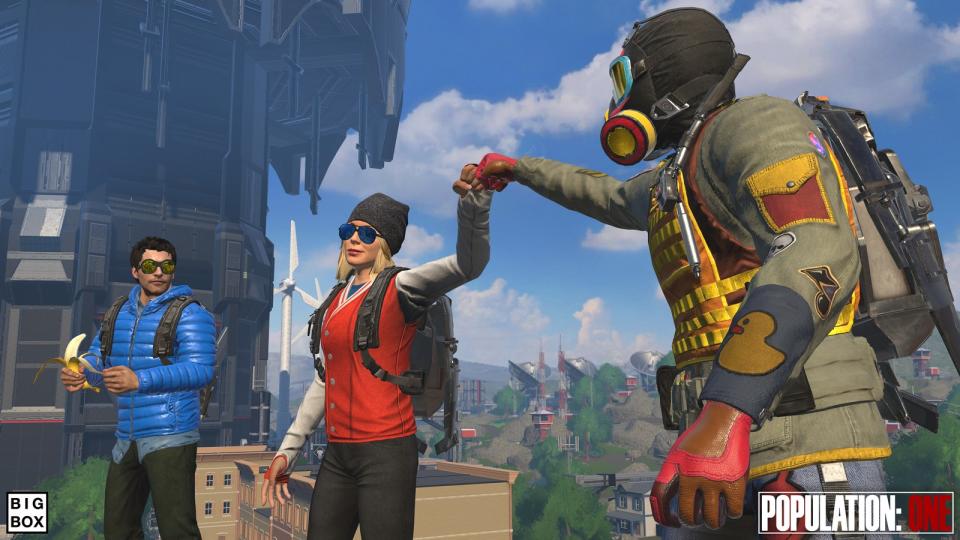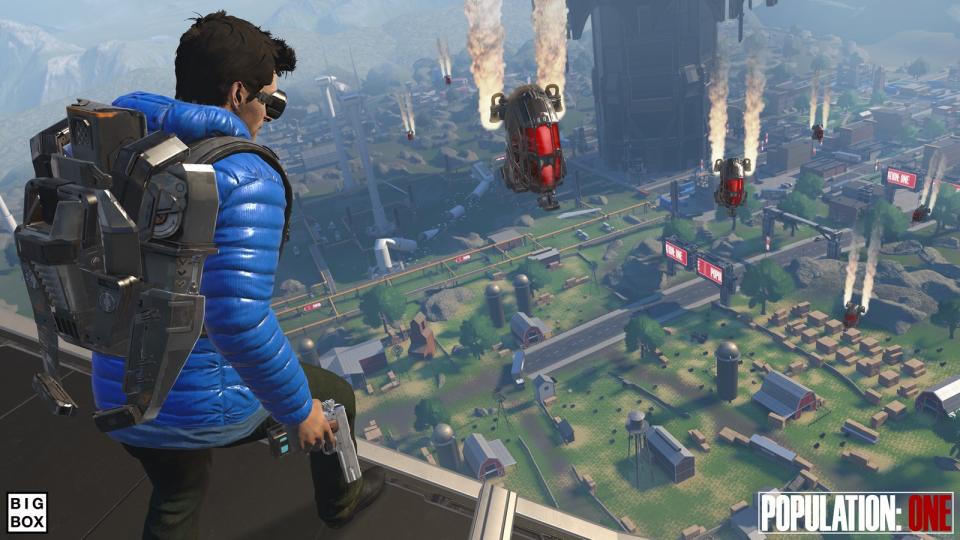'Population One' is the best VR battle royale yet
You can climb, fly and crossplay with practically every VR headset.
We've seen a few attempts at battle royale shooters in VR, like Virtual Battlegrounds and Rec Royale, but so far they haven't managed to capture the hectic magic of Fortnite and Apex Legends. It's often too clunky to traverse large maps, and matching up with other players can be a pain since there aren't many headsets out there. Just when I was ready to give up on finding the ideal virtual reality battle royale, I played BigBox VR's Population One, which wasted no time winning me over.
While it looks like a Fortnite clone on the surface -- the building mechanic makes that particularly glaring -- Population One adds its own unique elements for VR. Every surface in the game is climbable, even the enormous tower at the center of the map. And you'll be doing a lot of climbing, since you can also glide across the map by holding out your arms. What's most compelling is that the game will offer crossplay with every major PC VR headset platform -- Oculus Quest (1 and 2), Oculus Rift, SteamVR and Windows Mixed Reality -- when it launches this fall for $30. (Sorry PlayStation VR owners, you're out of luck this time.)
That's a level of cross-compatibility we haven't seen from any VR battle royale yet, and it should make for a vibrant player scene. Not only will it be easier to match up with others, it also means you don't have to shell out for a gaming PC and desktop headset to get in on the action. Just pick up an Oculus Quest 2 ($299) and you're good to go.

I was particularly intrigued to see how well Population One works on the Quest 2's mobile hardware, so I made that my vehicle of choice during my demo. An offline training session helps you learn the basic elements of the game: you climb surfaces by holding your virtual hands through them, and moving your controllers hand over hand. It's like climbing a ladder in real life, except you can do it just about anywhere. You heal by virtually peeling a banana or popping a can of soda. Reviving players involves rapidly rubbing two defibrillator paddles together. And weapons require manual reloading, which adds to the immersion during heated firefights.
Thankfully, Population One doesn't try to mimic Fortnite's vast construction features. Instead, you can build simple walls to serve as cover, or bridges to cross chasms. You find building materials throughout the map, alongside guns, ammo and shields, so you don't have to spend any time farming resources.
Given the Quest 2's limited mobile hardware, and the fact that Population One also needs to work with last year's slower model, Population One isn't exactly a pretty experience. The environment feels sparse and textures don't have much detail. You’ll have more graphical flourishes if you’re playing on a PC VR headset. But what matters more is that the game ran smoothly on the Quest 2, with no framerate hiccups or slowdown that would make you queasy in VR. I didn't feel much network lag either, which was surprising since I was playing in my basement, one floor away from my router.

Like most VR entries, Population One can't reach the crazy 100-person shootouts you'll see on traditional battle royale titles. Matches only have 18 players (consisting of six three-person squads), which makes for shorter overall matches. That's a better fit for VR though, where you're not just on a couch and mashing buttons. You can play the game while sitting or standing in VR, but either way you'll have to move your arms a lot to shoot, glide and climb. Fatigue is always an issue in virtual reality, but it'll be an even bigger factor in competitive multiplayer games, where working out may give you an advantage.
What makes Population One stand out is the versatility of its movement. You can fire at other players while gliding through the air or hanging off a wall. You can smash a window in a tall building and use it as a sniper nest. You're really only limited by your imagination (and the ever-encroaching force field around the edge of the map). Instead of feeling like a VR game trying to ape battle royale conventions, Population One felt more like it was evolving the genre to work better in virtual reality.
Sure, you could knock it for being a bit too much like Fortnite. But don’t forget that Fortnite only shot to fame by lifting the battle royale concept from PUBG and other PC shooters. What matters more is what developers add to existing concepts and genres. And in this case, BigBox VR may have finally crafted the ideal VR battle royale experience.
